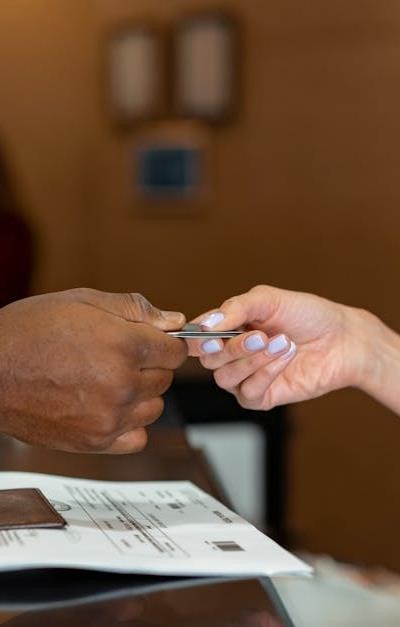
Embarking on online shopping with credit cards that aren’t
Verified by Visa (VBV) or Mastercard SecureCode requires
a heightened awareness of payment security. This guide
provides essential information for safely utilizing these payment
methods in the realm of e-commerce and online
transactions. Understanding the nuances of cardholder
verification when bypassing 3D secure protocols is key.
While fintech innovations continually advance credit card
security‚ older cards or those issued in certain regions may lack
this extra layer of authentication methods. Therefore‚
proactive steps are crucial to minimize the risk of online fraud
and potential chargebacks. This guide will detail how to
navigate non-VBV online payments effectively.
We’ll explore best practices for safeguarding your financial
information‚ recognizing potential threats‚ and leveraging available
fraud protection measures. Successful secure online
shopping with non-VBV cards hinges on informed
decision-making and diligent monitoring of your accounts.
Payment gateways play a vital role‚ but ultimately‚ the
cardholder bears responsibility for responsible usage.
Understanding the Landscape of Online Payment Security
The world of online payments is constantly evolving‚ presenting both opportunities and risks; Credit card security is paramount‚ yet vulnerabilities exist‚ especially with non-VBV cards. Online fraud is a significant concern for both consumers and merchants in e-commerce.
Traditionally‚ card verification relied on the physical presentation of the card and signature. However‚ online transactions necessitate alternative methods. 3D Secure protocols like Verified by Visa and Mastercard SecureCode were introduced to add an extra layer of authentication methods.
These systems utilize security codes or redirect users to their bank’s website for verification. However‚ not all credit cards are enrolled‚ leading to non-VBV scenarios. This absence increases reliance on the merchant’s risk management and the payment gateway’s security measures. Understanding this landscape is crucial for safe online shopping and minimizing potential chargebacks.
The Role of 3D Secure: Verified by Visa & Mastercard SecureCode
Verified by Visa (VBV) and Mastercard SecureCode are key components of 3D Secure‚ a payment security protocol designed to enhance credit card security for online payments. They act as an additional cardholder verification step during online transactions.
When a cardholder makes a purchase‚ they are often redirected to their bank’s website to confirm their identity‚ typically using a password or a one-time security code sent via SMS. This process helps to authenticate the cardholder and reduce the risk of online fraud.
However‚ the widespread adoption of 3D Secure isn’t universal. Many credit cards‚ particularly older ones or those issued outside certain regions‚ remain non-VBV. This means they don’t benefit from this extra layer of authentication methods‚ increasing the importance of other fraud protection measures and diligent risk management by merchants and payment gateways.
Navigating Non-VBV Online Payments & Security Codes
When using credit cards lacking Verified by Visa or Mastercard SecureCode for online shopping‚ reliance on the Card Verification Value (CVV/CVC) – the three or four-digit security code on the card back – becomes paramount. Ensure the website utilizes HTTPS (look for the padlock icon) for a secure checkout process.
Merchants employing robust risk management systems and Address Verification System (AVS) checks can mitigate some risk. AVS compares the billing address provided with the cardholder’s registered address. However‚ these aren’t foolproof and don’t replace the authentication methods offered by 3D Secure.
Be vigilant for phishing attempts and only enter your card details on trusted websites. Regularly monitor your online transactions and bank statements for any unauthorized activity. Understanding your card issuer’s fraud protection policies and chargebacks procedures is crucial when dealing with non-VBV payment methods.
How Non-VBV Cards Differ in Online Transactions
Online transactions with non-VBV credit cards lack the added security layer of dynamic card verification. With 3D Secure (like Verified by Visa & Mastercard SecureCode)‚ the cardholder is actively authenticated during the purchase‚ reducing online fraud risk. Without it‚ the transaction relies heavily on static data.
This means merchants bear a greater responsibility for risk management and fraud detection. Payment gateways may implement more stringent checks‚ potentially leading to higher false positive rates – legitimate transactions being declined. Authorization processes might take slightly longer.
Consequently‚ some e-commerce sites may restrict or discourage the use of non-VBV cards‚ or impose lower transaction limits. Cardholders should be prepared for occasional declines and understand that disputing fraudulent charges might require more documentation compared to 3D Secure purchases. Credit card security is paramount.
Contactless‚ Mobile Payments & Secure Checkout Technologies
Enhancing Security Beyond Traditional Methods
Since non-VBV credit cards bypass 3D Secure‚ bolstering payment security requires proactive measures. Utilize strong‚ unique passwords for all online shopping accounts and enable two-factor authentication methods wherever available. Regularly monitor your credit card statements for unauthorized online transactions.
Consider using virtual credit card numbers – temporary numbers generated for specific purchases – to limit exposure of your primary cardholder verification details. Explore digital wallets like PayPal‚ which often add a layer of protection between your card and the merchant. Be wary of phishing attempts and only shop on reputable websites.
Leverage your bank’s fraud protection services and report any suspicious activity immediately. Familiarize yourself with your card issuer’s policies regarding chargebacks and the process for disputing fraudulent charges. Financial technology offers tools for enhanced control; utilize them.




This is a really helpful and timely guide! I hadn
A solid overview of a potentially risky situation. The article does a good job of outlining the vulnerabilities of non-VBV cards and provides practical advice for mitigating those risks. I particularly liked the mention of payment gateways and their role in security. It